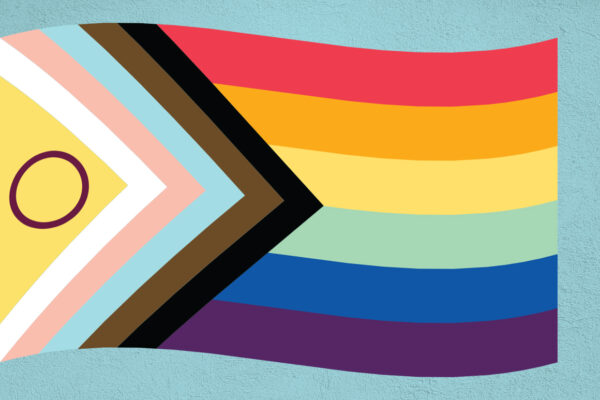Pride month is a time of reflection, celebration, and community. It is an opportunity for LGBTQIA+ individuals to honor themselves and take pride in individual and collective identities. As Ohio and the rest of the nation face an onslaught of anti-LGBTQIA+ legislation, trans and queer youth deserve space to celebrate who they are. While Ohio continues the fight against HB 454, which attempts to ban gender-affirming care, and HB 151, proposing to exclude trans women from sports, it is necessary that we recognize and uplift all communities that these bills harm. Many people support expanding the LGBT flag and acronym to include Black, brown, queer, intersex and asexual communities. Including these communities in the fight against anti-trans bills is even more critical.
The “I” in LGBTQIA+ stands for “intersex,” an umbrella term for people with variations in sex characteristics falling outside what we traditionally view as male or female bodies. There are many ways to be intersex that account for variations in chromosomes, genitals, and/or internal organs like ovaries or testes. People with intersex bodies may discover that they are intersex at birth, during puberty, or even later in life. Intersex people are a lot more common than most people think: Up to 1.7% of the world’s population is intersex, making it almost as common as having red hair or green eyes. Research suggests that as many as 1 in 100 people are intersex.
Depending on the variation, intersex children undergo nonconsensual surgeries as early as infancy and are subjected to hormone replacement therapy so that their body fits into the socially constructed binary of sex. This treatment differs from transgender children, who do not undergo surgeries until they are able to consent and whose access to hormone replacement therapy is threatened by current legislation. Some intersex people identify as transgender; however, these identities are separate and should not be conflated. House Bill 151 will cause direct harm both to the intersex community and the trans community by requiring genital inspections and “medical assessment” if a person suspects an Ohio athlete of being transgender. Some intersex children demonstrate secondary sexual characteristics typically associated with male and female bodies; therefore, they are particularly vulnerable to being singled out by any form of trans sports ban.
Forced medical examination of children could “out” intersex people who prefer to keep their identity private or may not even know that they have an intersex variation. Some athletes have even found out that they are intersex because of genetic testing for professional sports qualification. House Bill 151 would force children to find out at the hand of their school’s sports team. Many intersex people do not disclose this identity for fear of discrimination and violence. Families and doctors of intersex people frequently instruct them to keep their identity a secret due to stigma and shame. Doctors may inform intersex people that they have a “genetic medical condition” without further explanation that they are, in fact, intersex. For people who know they are intersex, those who know and choose to keep it private, or those who don’t yet know, House Bill 151 will cause significant harm.
Additionally, House Bill 454 explicitly excludes intersex people from the language banning gender-affirming care for trans youth however, it causes harm to the intersex community by enshrining a doctor’s ability to perform nonconsensual surgeries on intersex bodies. Intersex people, just like trans people, need autonomy to make decisions about their bodies. Doctors should not force intersex children to receive surgeries or medical intervention for cosmetic purposes unless these surgeries are medically necessary or the person can provide consent.
At a glance, it would appear that trans people and intersex people face opposing problems: intersex people are forced to undergo medical intervention, while trans people suffer gatekeeping and prohibition from medical intervention. At their core, however, these problems are two sides of the same coin in the fight for sexual and gender minority bodily autonomy.
Pride month is a time for celebration, reflection, and community. It is a time to acknowledge our resilience, cherish our chosen families, and recommit to the fight that still lies ahead. While many strides have been made to ensure inclusivity through the use of updated acronyms and flags, our fight for bodily autonomy and liberation must also be inclusive. The discrimination that trans and intersex people face stems from the same social constructs and cis-sexism attempting to confine bodies into a binary when, scientifically, this binary does not exist. All children deserve to explore themselves, articulate their gender identity, and be listened to by parents and caregivers before making medical decisions. All children deserve access to sports without fear of discrimination.
This pride month and beyond, we will continue to mobilize for policies that support LGBTQIA+ youth and the entire community. Join us at a Pride event near you.

